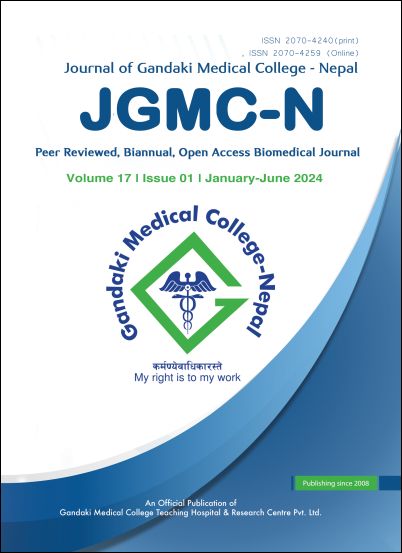Different occlusal schemes in eccentric mandibular positions
DOI:
https://doi.org/10.3126/jgmcn.v17i1.66311Keywords:
Canine-guided occlusion, group function, non-working side, occlusal schemes, working sideAbstract
Introduction: The alignment of teeth and their occlusal relationship in the arch plays an important role in mandibular movements during static and dynamic positions. Harmonious and synchronized mandibular movements is important for the physiological occlusion during lateral excursions of the mandible. Hence, the present study was designed to determine the different occlusal schemes in eccentric mandibular positions and the frequency percentage of each occlusal pattern was determined.
Methods: This cross-sectional study was conducted among 64 undergraduate students of Gandaki Medical College aged from 18 to 30 years, where, a convenience sampling technique was used for data collection. The occlusal contacts were recorded in 1, 2, and 3 mm from the maximum intercuspal position on both the working and non-working sides. Working side occlusal contacts were determined for the total range of lateral positions and classified into: canine protection, group functions, or others (occlusal patterns other than those described).
Results: Most of the working side contact patterns were classified as group function (66.15%) followed by canine-guided occlusion (18.75%); while contact patterns other than canine protection and group function were found in 15.10% of the contact patterns on the right side. On the left side, group function was found in 62.50%, canine protection in 9.33% and others in 14.67% of the contact patterns.
Conclusions: On laterotrusion, most subjects had group function on the working side but canine protection was found to be rare.
Downloads
Downloads
Published
How to Cite
Issue
Section
License
Copyright (c) 2024 The Author(s)

This work is licensed under a Creative Commons Attribution-NonCommercial 4.0 International License.
This license allows reusers to distribute, remix, adapt, and build upon the material in any medium or format for noncommercial purposes only, and only so long as attribution is given to the creator.

